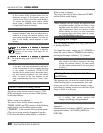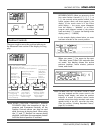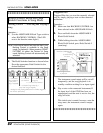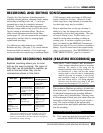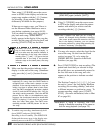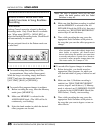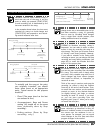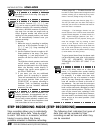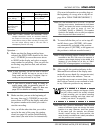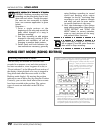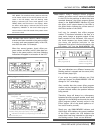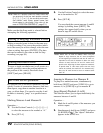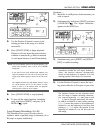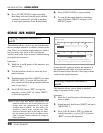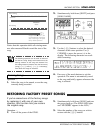
88
BACKING SECTION
SONG MODE
HINT
A Repeat function (A-B Repeat) lets you re-
peatedly and continuously record over a
specified section of the song. (See page 93
for details.)
HINT
USING POSITION CONTROLS IN RECORDING—
The Position Controls ([n], [v], [ /], and
[ m]) can be used to pause the song during
Realtime recording (for recording standby),
and select a different measure or position in
the song. You can also set events such as
effect program number and effect on/off
settings at the paused position, and these
will be automatically entered once you
resume recording.
To do this:
1. While the song is recording in realtime,
press any of the Position Controls ([n],
[v], [ /], and [ m]). Song recording will
then pause.
2. Use the Position Controls to select a dif-
ferent position in the song. (The jump-
to-beginning ( b) and jump-to-end (
b
)
controls can also be used in this condi-
tion.)
The effective chords, patterns and mute
on/off status events at the current
position are indicated in the LCD display,
when the Backing mode display is
selected (the cursor arrow appears at
the PTN or TEMPO box).
3. If you want, you can set additional
events here as recording is paused.
These will automatically be recorded to
the current position when you press
[START/STOP] to resume recording in
realtime. Then, as Realtime recording
continues, you can “overdub” additional
events as you wish.
HINT
MUTE, BASS NOTE, AND RETRIGGER—The
various automatic accompaniment and re-
cording features of the GW50 make it possi-
ble to easily create polished, complex com-
positions. Here are three important tools
and some ideas on how to use them:
STEP RECORDING MODE (STEP RECORDING)
6
7
8
• Mute (page 86) — The Mute function can
be used to create sophisticated arrangements and
textures, allowing you to selectively bring instru-
ments in and out, adding variety to the song.
• Changing the bass note function (page 75) —
This lets you make your own bass lines; keep in
mind that you can enter a different bass note for
each 16th note in a measure.
• Retrigger — The Retrigger function lets you
record rhythmic “hits” in which some of the Back-
ing parts sound altogether, to create accents in a
song. Special Retrigger patterns (nos. 241 –
244) are provided for this purpose, letting you
enter the retrigger “hits” by entering a chord
event at the desired 16th note position.
However, the Retrigger function can be used with
any of the other patterns by entering a chord
event while a note of the pattern data is playing
(in other words, not during a rest).
To get a better idea of how the above tools
can be effectively used, refer to the section
“USE OF ADVANCED RECORDING
TECHNIQUES—FACTORY SET SONG 1” on
page 153.
HINT
MUTING SUSTAINED SOUNDS—Since mute
events only affect notes on or after the
event, it is possible that certain backing
sounds may continue even after the mute.
For example, if a whole note bass note
starting at the top of a measure is muted
part of the way through the measure, the
note will continue to sound to the end of
the measure. You can mute the note part
of the way through the measure by entering
both a mute event and a Retrigger or chord
event at the desired position. In effect, this
cuts off the current note, replacing it with
the new Retrigger or chord event; however,
this new event is not heard, since a muting
event occurs at the same position. (Also
see page 154.)
9
STEP RECORDING MODE (STEP RECORDING)
Step recording allows you to individually
and precisely enter data “step-by-step”
to each 16th note in a measure, without
having to worry about the timing
problems inherent in Realtime recording.
The following chart indicates the types of
data that can be recorded in Step
recording as well as how and when they
can be recorded.



